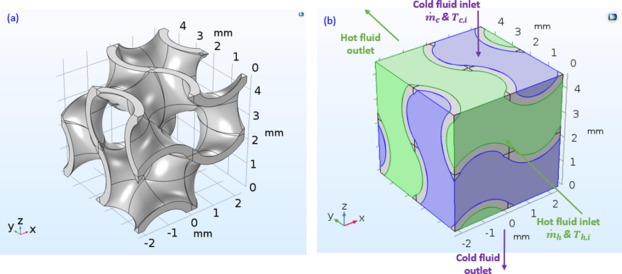The efficiency of the system is related to the cubic shape of the surface. The heat exchanger sucks water through
 3D printed heat exchanger
3D printed heat exchanger
X-ray computed tomography confirmed that the heat exchanger has no defects.
By passing water through the device, the researchers were able to demonstrate changes in the temperature of the liquid flowing through it from 10 to 20ºC. The flow rate ranged from 100 to 270 mm/min.
Experimental results show55% increase in heat exchanger efficiency compared to the thermodynamically equivalent, most efficient counterflow heat exchanger. At the same time, the prototype is only one tenth the size of a conventional device.
 Heat exchanger structure
Heat exchanger structure
The development was carried out by an international team of scientists led by Dr. Shanmugam Kumar from the University of Glasgow.
“The possibility of developing smaller, lighter andEfficient heat exchangers can help us develop refrigeration systems that require less power, for example, or high-performance engines that can be cooled more efficiently. We are interested in further development of this technology through future research,” the scientists say.
“We have been working for several years to find newapplications for this type of microarchitectural 3D printed grids. We have already demonstrated how they can be used for applications such as recyclable high-performance batteries and the development of future smart medical devices such as prosthetics and braces,” said Dr. Kumar. "This latest work shows that we can use these gyroid array architectures to create a material with a surprisingly high surface area to volume ratio that is very heat transfer friendly."
Read more:
There is another “planet” inside the Earth: how it saved nascent life
New study refutes light energy transfer theory
Scientists added silicon to a quantum computer: calculations became record-breakingly accurate